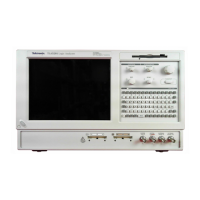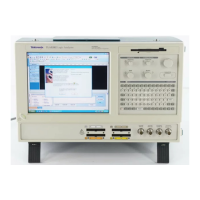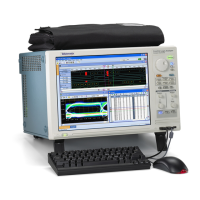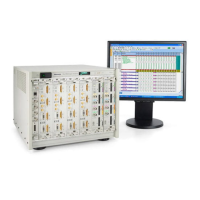Getting Started Deskewing Probes and Channels on the supported Instruments
6. Set the channel Source in the From area to Ch1. The Source waveform is the reference point to which
the remaining channels are deskewed.
7. Set the channel Source in the To area to Ch2, to deskew the channel.
8. Select the Reference Level for Ch1 and set the reference value. The r eference level is the percentage
level o f the waveform from which to take the edges to deskew.
9. Select the Reference Level in the To area for Ch2 and set the reference value.
10. Select the Hysteresis in the From area for Ch1. H
ysteresis (see page 17) helps to ignore the noise
level in the waveform.
11. Select the Hysteresis in the To area for Ch2 and set the hysteresis value.
12. Select the Slope, Rise or Fall, on which to perform the deskew operation.
13. Select th
e number of edges used for deskew.
14. To start the deskew utility, select Utilities> Perform Deskew and c onfi rm the operation.
15. Without changing the From: Ch1 c hannel, deskew the remaining channels.
The next figure shows the results after p erforming the deskew operation with a single edge. The reference
level is set to 50% for Ch1 and Ch2, the hysteresis is set to 5%, the number of edges is set to 1, and the
slope is set to the rising edge.
NOTE.
The probe compensation signals varies from 0.8 to 1 volt (for all supported TDS instruments)
and from 0.35 to 1 volt (for all supported DPO instruments) rather than swinging from 0 to 1 volt in a
traditional o scilloscope. Set the Reference level and the Hysteresis level appropriately so that the Ref
level is at the middle of the swing on the signal.
14 TDSUSB2 Universal Serial Bus Measurements Package

